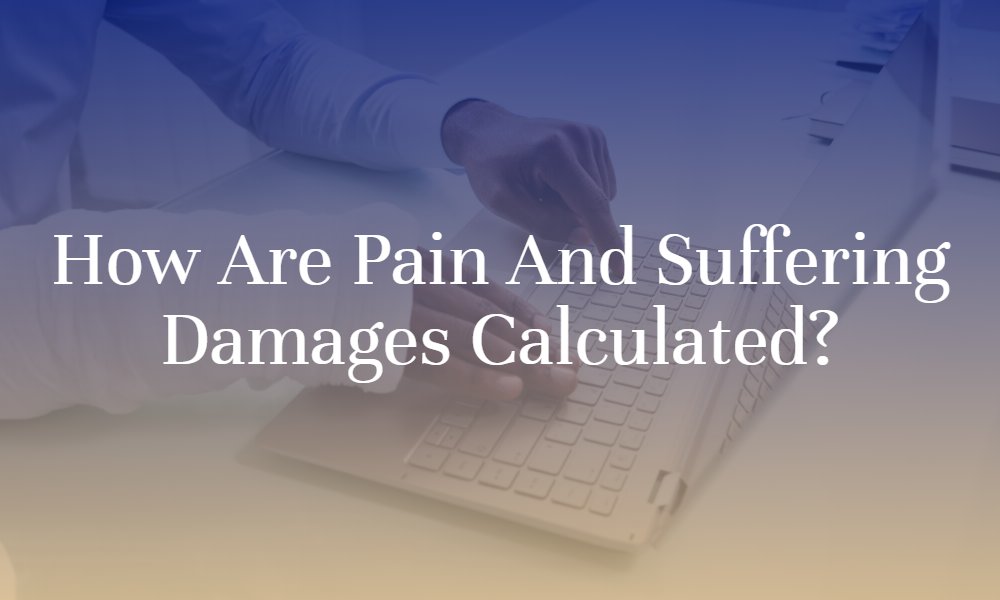
How Do Insurance Companies Determine Pain and Suffering?
Colburn Law
Posted in Personal Injury on April 17, 2020

In personal injury cases and insurance claims, you may claim two main types of damages: economic and non-economic. Economic damages refer to the tangible, out-of-pocket expenses you incur during the accident, while non-economic damages involve the emotional impact of the injury.
Also known as pain and suffering damages, this type of compensation can be difficult to calculate. However, many insurance companies have specific formulas they follow to determine how much of this compensation to award personal injury victims.
Common Types of Pain and Suffering Damages
While you may be able to claim pain and suffering damages in your case, it is important to recognize what non-economic damages you are eligible for. It is important to receive compensation for the emotional impacts that you suffered as a result of the injury, not just the tangible out-of-pocket costs.
There are two main types of pain and suffering damages you can collect: physical and mental.
- Physical pain and suffering refer to the physical pain that you experience as a result of your injuries. These damages may include the chronic pain and discomfort you experienced due to your injuries, as well as the future damage that you will suffer from as a result of the accident.
- Mental pain and suffering refer to the emotional damage that you suffered as a result of the injuries you sustained. These damages may include emotional distress, emotional anguish, anxiety, depression, fear, anger, and the loss of enjoyment of life. Severe mental pain and suffering damages may extend to the development of mental illnesses such as post-traumatic stress disorder. You may also claim mental pain and suffering damages for anger, sexual dysfunction, sleep disturbances, and shock.
Understanding pain and suffering can be complex, but hiring a lawyer can help. Your attorney can help you determine which damages you may be eligible for, and can help you determine how to prove your need for these damages in negotiations with the insurance company.
How Are Pain and Suffering Damages Calculated?
There is no single formula that all insurance companies use to calculate pain and suffering damages. Each insurance company may use their own method or even have their own computer programs to determine how much pain and suffering to allot to each person who files a personal injury claim with them.
However, there are two common formulas that your attorney and the insurance company may use to calculate your non-economic damages: the multiplier method or the per diem method.
The multiplier method uses a number between 1 and 5 to determine the amount of pain and suffering damages a person can claim. The multiplier you receive depends on the severity of the injury — a minor injury may receive a 1 and a debilitating, disabling injury may receive a 5.
The company will then multiply that number by the amount of your economic damages to receive your pain and suffering amount. For example, if you receive $3,000 in economic damages and the company assigns you a multiplier of 2, you will receive an additional $6,000 in pain and suffering damages.
The per diem method, on the other hand, pays you a certain amount each day until you reach maximum recovery. For example, you may receive $100 each day following your car accident and it may take you 60 days until you reach full recovery. At the conclusion of your case, you will receive $6,000 in pain and suffering damages.
Why You Need a Lawyer for Your Personal Injury Case
Pain and suffering damages can be complex and difficult to calculate since no receipts or invoices can quantify this type of harm. However, you deserve compensation for the emotional impacts that your personal injury had on you and your family — and your lawyer can help you determine the amount you qualify for.
Contact your personal injury attorney as soon as possible following your accident. Your lawyer will evaluate your damages, help you understand the amount of compensation you may be able to collect and determine whether or not any settlement offer you receive is sufficient to cover your damages.



